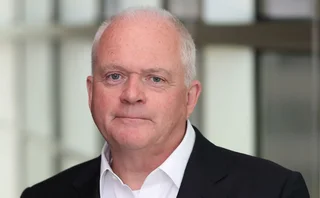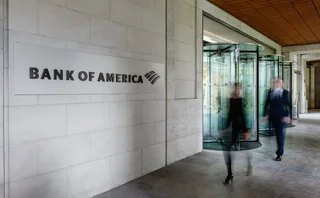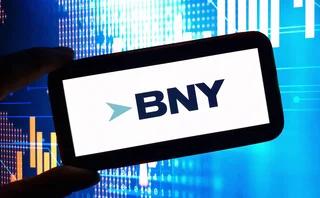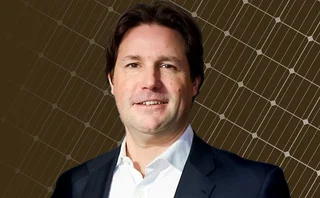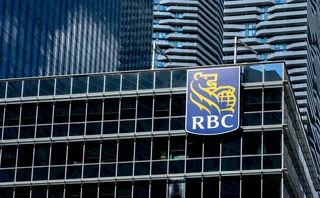
The T. ROWE method
Dalia Fahmy talks to Mary Miller, David Tiberii, Mark Vaselkiv and Patrick Cassidy about their firm’s conservative approach

When Standard & Poor’s (S&P) downgraded Ford Motor Company and General Motors to junk in May, dumping two of the world’s largest companies among the world’s riskiest borrowers and turning the credit world on its head, the fixed-income group at T. Rowe Price, one of the country’s largest investment managers, knew precisely what to do: sit back and wait.
Fixed-income head Mary Miller and her team had been expecting the GM downgrade along with the rest of the market—although S&P acted much earlier than anybody predicted—and had prepared by selling bonds of GM Corporation in April and building a marketweight position on GM’s financing arm, the General Motors Acceptance Corporation (GMAC), instead. Her portfolio managers left room to buy more GMAC paper cheaply after the downgrade, arguing that GMAC’s business model made for a safer way to gain GM exposure. They had not expected the Ford downgrade, but had been bearish on the automaker for months and only held a neutral position based on valuation.
After listening to S&P’s post-downgrade conference call, evaluating the news and revisiting their earlier decisions, Miller and her team concluded they got it right the first time and would simply wait for the storm to pass.
“We’re taking a long-term view,” says Miller. “Some things that may unfold this year may put more pressure on the bonds and the ratings, but we think a year from now spreads are likely to be tighter.”
The fund managers at T. Rowe Price share Miller’s long-term approach, pointing out that it could take two or three years before the US automakers emerge from their crisis. But they like GM’s high liquidity, have faith in its management and feel its bonds are undervalued. Three years might seem like a long time away for some managers, but at T. Rowe Price, it’s all about patience. Both David Tiberii, the lead investment-grade portfolio manager, and Mark Vaselkiv, who runs high yield, say they plan to add to their holdings once the dust settles.
“We think these bonds trade cheaply compared with where their credit will ultimately settle out,” says Tiberii, arguing that, at 550 basis points over Treasuries, GM was trading more between the single-B minus and triple-C plus range after the downgrade, instead of in its higher double-B rank where the average bond priced at a tighter spread of around 283bp.
Tiberii is allowed to hold a small fraction of his assets in high yield, and says he will try to convince his less conservative high-grade clients to sell some of the riskier assets in their high-yield allotments so they can keep their GMAC and Ford holdings. Mark Vaselkiv, who runs T. Rowe Price’s high-yield funds, says he will advise clients to go overweight on GMAC bonds over the next few months.
Background
Founded in 1937, Baltimore-based T. Rowe Price is one of the country’s oldest mutual funds. The firm has $236 billion under management, with about $60 billion in fixed-income assets evenly divided into retail and institutional funds.
Miller, who joined T. Rowe Price 22 years ago after starting her career as a legislative analyst for a congressman on Capitol Hill, was promoted to head of fixed income last year and now supervises 90 investment professionals, including 27 portfolio managers, 30 analysts and 16 traders.
The firm’s managers like to plan their investments as far ahead as possible, assessing credit fundamentals three to five years into the future. When they like a bond, they buy it to keep. When it goes down, they buy more. If a credit seems too risky, such as when Enron’s bookkeeping became so complicated that they couldn’t keep up, they don’t touch it.
Sometimes the approach pays off in handsome returns, although in most fixed-income categories the firm is by no means a profit machine due to its conservative style. The T. Rowe Price High Yield fund, managed by Mark Vaselkiv, is in the twelfth percentile of performers in its category over the past decade, with a return of 7.6%. The Tax-Free Income municipal bond index is in the fifteenth percentile, with a 10-year gain of 6.1%. The seven-year-old Corporate Income fund, mainly composed of investment-grade corporate bonds, has had less of a run, landing in the forty-seventh percentile in the past five years. Tiberii, who took over the fund two years ago, says he has begun focusing more on credit risk and less on interest rate risk in order to bolster returns, and expects that performance will improve in the years ahead.
“We shoot for top-quartile performance,” says Tiberii. “We may be volatile with our peers over the short term, but we try to provide consistency over the long term.” Vaselkiv agrees, pointing out that his fund receives top ratings from companies such as Morningstar for its low volatility and steady returns in good times and bad.
Clients seem happy with the approach. “Just looking at performance in and of itself is a little short-sighted,” says Jim Ha, the senior manager of benefit plan investments at telecom company Avaya. The company has invested in the high-yield fund, and also offers a T. Rowe Price equity fund as a 401K option. “We picked them because they’re a little more defensive,” he added, explaining that he is comfortable with T. Rowe Price’s conservative style.
T. Rowe Price also takes the long-term view on its staff, making a big effort to hire beginners at the entry level and keeping them as long as possible in order to build institutional knowledge. “We have a philosophy that we want to grow from within,” says Miller. “It takes time to develop people, so we want to keep hiring at the entry level so we can have a steady pipeline of talent.”
Fixed-income team members have an average of 11 years’ experience at T. Rowe Price and 17 years in the business. While some competitors have bled staff to faster-paced and better-paying hedge funds, T. Rowe Price’s fixed-income group has lost none.
Picking the winners
But it’s not just about patience. Miller says her group’s strategy relies on extensive proprietary research, risk management and a team of specialists who stick with one beat for decades. The investing approach starts with a top-down view of macroeconomic conditions, and then hones in on individual companies. The firm relies heavily on credit selection, and analyst performance is evaluated based on picks.
“We put together an attribution analysis that allows us to identify those securities that have been positive and negative contributors. To the extent there’s an analyst assigned to that particular name, the analyst is given credit,” says Patrick Cassidy, head of investment-grade corporate and municipal bond research. “If the analyst truly thinks he has a superior credit, he needs to convince the portfolio manager to make an allocation.” In the current environment, he notes, analysts spend more time pruning than adding credits.
Emerging markets, however, is one area where the firm has been growing. Miller recently hired two analysts to cover what she considers one of the most promising sectors in credit, and hopes to add an international economist soon. While most investors buy emerging markets to make a quick profit, T. Rowe Price takes the patient approach here too.
“The ability to uncover improving situations in emerging markets, to take a long view on the credit and participate in upgrades and watch them become industrialized, is a very rewarding process,” says Miller.
T. Rowe Price manages about $10 billion in high-yield assets, which Vaselkiv runs evenly divided into retail and institutional accounts. Surprisingly, about $2 billion is invested with institutional clients from Scandinavia, where T. Rowe Price serves bond-hungry pension plans in Denmark, Finland and Norway. Vaselkiv also manages money for diverse US institutional investors such as a municipality, a union, a religious organization and a university endowment.
For the time being, these and other existing clients will be the only ones: the firm has closed all its junk funds to new investors. “The process was largely completed over a year ago at the beginning of 2004, and at the end of 2004 we remained committed to stay closed for the foreseeable future,” says Vaselkiv. “We saw the asset class becoming extraordinarily overvalued, particularly on the retail side, and we didn’t want to have a lot of our potential shareholders chasing the market.”
Given that many of his high-yield assets are invested with small-cap firms whose bonds rarely exceed $100 million, he explains, managing more than $10 billion would force him to buy more names than he can keep track of, or overexpose himself to individual credits.
On the flip side, Vaselkiv says there have been few outflows from his funds despite the exodus in the broader market because his clients want to stay invested. But they will have to brace themselves for a rough ride. As the high-yield market continues to drop and experts predict rising interest rates and credit default rates, T. Rowe Price is preparing for the storm.
“We have been upgrading the portfolio over the past year,” says Vaselkiv, who raised the average quality of his investments from single-B to double-B minus. “In 2003 there was a tremendous run on the speculative sector of the market, and as a conservative manager we were thrilled to make 20–30%. But we just started to lock in our profits on many of those names.”
Vaselkiv took profits on Calpine’s subordinated 8.5% 2011 bond, for example, which he bought in the middle of 2003 for 60 cents on the dollar and sold in December for about 85 cents.
Living off the profits of the high-yield rally won’t carry the firm through the current bear market, however, and with only 4% in cash, Vaselkiv has been investing defensively in shorter maturities, floating-rate notes and seasoned bonds issued three to five years ago when coupons were higher, which he expects will be refinanced in the next couple of years. In some cases, the issuers of these older bonds have climbed the ratings ladder, increasing the value of the bond. “Where possible, we try to hold on to those old museum pieces to keep the yield of the fund healthy,” he says.
For exposure to shorter maturities, T. Rowe Price bought yellow pages publisher Dex Media’s 12.125% bonds due in 2012 and 9.875% bonds due in 2009. Vaselkiv prefers these to new issues, because with current yields of 10.28% and 8.84% respectively, these securities are still more profitable than the Dex Media 2011 5.875% bonds that yield 6.5%.
Vaselkiv has also been adding floating-rate notes to his portfolio over the past few years to benefit from rising interest rates, such as the 2010 note issued by Universal City Development, a Florida-based amusement park, that currently yields about 7.49%.
But a lot of Vaselkiv’s strategy relies on picking sectors. In 2003, he was overweight in utilities and technology, which he took profits on in 2004. At the time, he bought energy, metals, chemicals and forest products. This year, Vaselkiv has been paring back metals but remains overweight in energy and slightly less so in chemicals.
He is also overweight in publishing, with Dex Media; telecom, with MCI, ATT, Nextel Communications and Western Wireless; gaming, with MGM Mirage, Mandalay Resorts, Argosy Gaming and MeriStar Hospitality; but underweight in technology, metals and autos. Most of his auto holdings are in heavy trucking companies and parts makers such as Navistar International, Cummins and Accuride.
Vaselkiv’s funds aren’t the only ones with high-yield holdings. Tiberii, who joined T. Rowe Price two years ago and manages about $2.5 billion in institutional and retail investment-grade assets, keeps a fraction of his portfolio in high yield. Usually he holds credits that are likely to be raised to investment grade, but in this market, he’s revisiting every decision.
“We are looking really hard at our double-B exposure,” says Tiberii. “We look at those and think: ‘in this current environment would they be upgraded to investment grade?’” Arguing that his market is currently valued “fair to rich”, he is investing in sectors that are likely to remain stable, such as basic industries, utilities and energy. At the same time, he is pruning consumer cyclicals.
The LBO factor
Whether in high yield or investment grade, T. Rowe Price is being cautious for now, in an environment fraught with danger. Cassidy and Tiberii warn in particular against the growing number of leveraged buyouts (LBOs). In the first quarter, the volume of LBOs rose to the highest level in 10 years, $39 billion. Leveraged buyouts hurt creditors because new bonds or loans are used to buy back equity, thereby hurting the value of existing bonds.
Cassidy says funds such as T. Rowe Price like to buy the same kind of companies that are susceptible to LBOs: those with good business models, healthy cashflow and low debt.
In this kind of environment, with credit quality peaking and management turning its attention to shareholders instead, LBOs are a growing concern. Cassidy says that, while his team has drawn up lists of particularly vulnerable companies, it is impossible to predict every LBO. “We spend a lot of time on GM, and that’s well prepared for,” he says. “The LBO happens in a couple of hours. The announcement comes, the bonds widen. To avoid that is very difficult.”
Tiberii says to protect their portfolios, fund managers have gone though the list of potential LBO targets and screened every name. In some instances, credits were eliminated or their weighting reduced, and in other cases they were even added to diversify the risk.
The recent flattening of the yield curve, which has seen the spread between two-year and 10-year Treasury notes shrink to half a percentage point, its narrowest level since 2001, has also made investing more difficult.
Because the corporate yield curve hasn’t flattened in line with the Treasury curve, longer maturities of corporate bonds have been left behind and are now comparatively underperforming. To protect himself, Tiberii has weighted the maturities in his portfolio in the shape of a barbell—with overexposure to the very short and long ends, and fewer holdings in the middle of the curve. In addition, most of his long holdings are in stable or improving credits—such as financial services firms—which he expects will outperform the market, in order to reduce his risk.
The US Treasury’s announcement in May that it might reintroduce the 30-year Treasury bond in 2006 helped reverse some of the flattening as the long end of the curve underperformed, Tiberii says. But in the long term, he adds, he does not expect the news to have a significant impact.
T. Rowe Price might have its eye on the long term, but the world around it is still changing quickly. Hedge funds, for example, which have wreaked havoc on so many cozy niches in the market, have taken their toll.
“We share the liquidity, bid and attention that sell-side firms give to hedge funds. Their rapid growth and active trading can make them a very interesting client to the sell side,” says Miller, pointing out that traditional buy-side firms have been occasionally getting short shrift. This increased focus by the sell side on hedge funds has resulted in smaller allocations of new bond issues, for example, and Miller says the firm has been working to recapture Wall Street’s attention. “I want to make sure that in the general flow of business we’re getting our fair share.”
The T. Rowe Price fixed-income team is also wary of hedge funds’ high leverage and the massive growth of derivatives in recent years, which they have largely fuelled. “That leverage is a risk,” says Tiberii. When a sell-side credit analyst recently met him to discuss synthetic credit default swaps, “I flashed back to 1987, and the whole dynamic hedging issue on the equity side that helped magnify the losses on Black Monday.” A similar ripple effect could magnify credit market losses in case of an adverse event, he adds, albeit on a smaller scale.
Cassidy agrees. “My concern is how untested the market is, and how CDS could unwind and what impact it would have on our cash market,” he says, pointing out that a major credit event could easily set off a chain reaction. “There’s counterparty risk. I’m concerned that somebody who’s writing a lot of these CDS contracts can’t make good because of some unforeseen event.”
Nevertheless, T. Rowe Price plans to test the CDS waters itself by buying and holding credits when cash bonds are not available or not available in the appropriate maturity. However, the firm has no intention of aggressively playing in the CDS market. “It’s an area of the market in which we feel we have to build our capabilities,” says Tibirii. “We don’t expect these to be large positions in our portfolio, or important ones at first. It’s just an area where we can bring our team up to speed and watch how these instruments react in different markets.”
A broader approach
Hedge funds have produced one other change at T. Rowe Price: the willingness to play wider swaths of the capital structure and bring together the analysis of debt and equity. T. Rowe Price fixed-income and equity analysts and portfolio managers have been working closely together since 2002, and next year the firm plans to combine the working spaces of the two groups on one large floor. This will allow the firm to compete more effectively with hedge funds, but also provides a longer view of a credit’s history, says Cassidy. Some companies that issued stocks 10 years ago may have issued high-yield bonds five years later and investment-grade bonds more recently. Cassidy says having all three analysts and portfolio managers from all three disciplines assess the credit now can result in better decisions.
In the end, it’s all about protecting investors from losses. The fixed-income team at T. Rowe Price say their decisions have helped investors avoid credit pitfalls in the past, such as when the investment-grade group sold Electronic Data Systems, Toys “R” Us and JCPenney early in 2004 before they got hit. Vaselkiv particularly prides himself in having side-stepped the telecom fiasco of 2002 by underweighting the sector.
“The first rule of high-yield investment is don’t lose your clients’ money. In a really simplistic way, you’re in an asset class that pays you a big income stream to take risk,” says Vaselkiv. “Your performance is simply a function of your annual income stream less your realized losses.”
Cassidy sums it up nicely for the investment-grade market: “That’s really where our bread and butter is,” he says. “Avoiding bad names.”
Only users who have a paid subscription or are part of a corporate subscription are able to print or copy content.
To access these options, along with all other subscription benefits, please contact info@risk.net or view our subscription options here: http://subscriptions.risk.net/subscribe
You are currently unable to print this content. Please contact info@risk.net to find out more.
You are currently unable to copy this content. Please contact info@risk.net to find out more.
Copyright Infopro Digital Limited. All rights reserved.
As outlined in our terms and conditions, https://www.infopro-digital.com/terms-and-conditions/subscriptions/ (point 2.4), printing is limited to a single copy.
If you would like to purchase additional rights please email info@risk.net
Copyright Infopro Digital Limited. All rights reserved.
You may share this content using our article tools. As outlined in our terms and conditions, https://www.infopro-digital.com/terms-and-conditions/subscriptions/ (clause 2.4), an Authorised User may only make one copy of the materials for their own personal use. You must also comply with the restrictions in clause 2.5.
If you would like to purchase additional rights please email info@risk.net
More on People
Fishwick hands over BlackRock CRO role, Citi expands Asia FX team, and more
Latest job changes across the industry
Nomura shuffles risk methodology team
Epperlein takes advisory role six months after Japanese bank’s FRTB IMA go-live
Andy Ross leaves StanChart
CurveGlobal veteran confirms his departure as bank’s global head of prime brokerage
People moves: BofA’s new markets heads, Barclays takes SG’s Mastrangelo, and more
Latest job changes across the industry
People: BNY taps Nasdaq CRO for enterprise risk role, Hoornweg steers StanChart CIB solo, and more
Latest job changes across the industry
People: Nomura’s rates rebuild continues, DB USA’s new CEO, and more
Latest job changes across the industry
JP Morgan’s credit structuring head departs
Denis Gardrat will head infrastructure investor Rivage Investment’s UK unit
UBS sterling rates head joins RBC Capital Markets
Ian Hale joins the Canadian bank as head of European inflation trading
